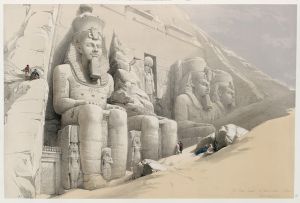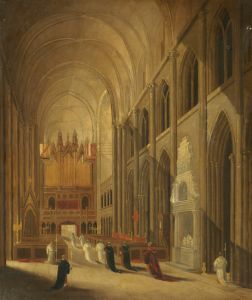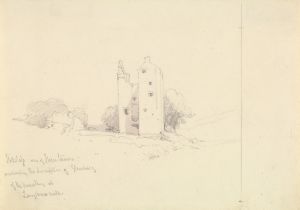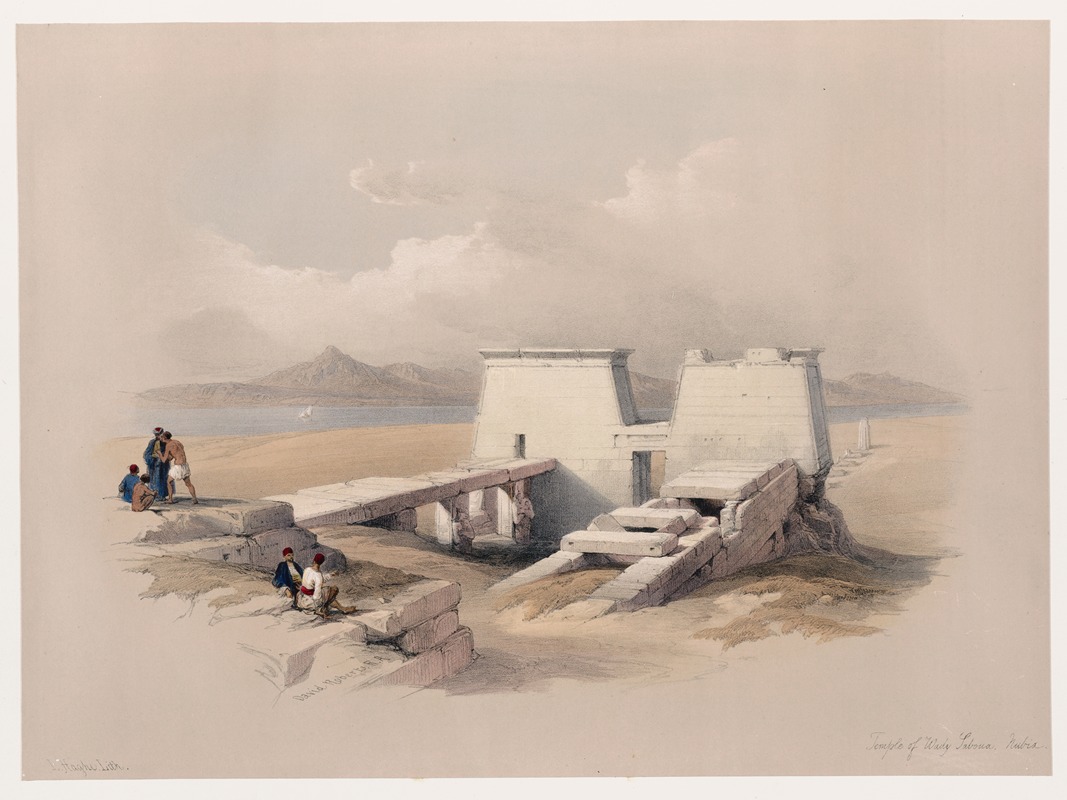
Temple of Wady Saboua [Wadi al-Sabua], Nubia.
A hand-painted replica of David Roberts’s masterpiece Temple of Wady Saboua [Wadi al-Sabua], Nubia., meticulously crafted by professional artists to capture the true essence of the original. Each piece is created with museum-quality canvas and rare mineral pigments, carefully painted by experienced artists with delicate brushstrokes and rich, layered colors to perfectly recreate the texture of the original artwork. Unlike machine-printed reproductions, this hand-painted version brings the painting to life, infused with the artist’s emotions and skill in every stroke. Whether for personal collection or home decoration, it instantly elevates the artistic atmosphere of any space.
David Roberts' painting Temple of Wady Saboua [Wadi al-Sabua], Nubia is a depiction of the ancient Egyptian temple complex located in Lower Nubia, near the modern border between Egypt and Sudan. The artwork is part of Roberts' extensive series of lithographs and paintings that document the landscapes, architecture, and monuments of Egypt and the Near East during the 19th century. Roberts, a Scottish painter, is renowned for his detailed and romanticized portrayals of these regions, which he visited during his travels from 1838 to 1839.
The Temple of Wadi al-Sabua, whose name translates to "Valley of the Lions," was originally constructed during the reign of Pharaoh Amenhotep III of the 18th Dynasty and later modified by Pharaoh Ramesses II of the 19th Dynasty. The temple is notable for its avenue of sphinxes, which gives the site its name, and for its dedication to the gods Amun and Ra-Horakhty. Like many other temples in Nubia, it was part of a broader effort by the pharaohs to consolidate their influence over the region and promote their divine authority.
Roberts' painting captures the temple as it appeared in the 19th century, prior to the relocation of the site due to the construction of the Aswan High Dam in the 1960s. The dam's creation of Lake Nasser threatened to submerge many ancient monuments in Nubia, including Wadi al-Sabua. As part of an international effort led by UNESCO, the temple was dismantled and reconstructed on higher ground to preserve it for future generations.
Roberts' works, including this painting, were widely disseminated in the form of lithographs produced by Louis Haghe, a prominent lithographer of the time. These prints were published in the multi-volume series The Holy Land, Syria, Idumea, Arabia, Egypt, and Nubia between 1842 and 1849. The series played a significant role in shaping European perceptions of the Middle East and North Africa during the 19th century, offering a glimpse into regions that were largely inaccessible to most Europeans at the time.
The painting reflects Roberts' characteristic attention to architectural detail and his ability to evoke the grandeur and mystery of ancient sites. While his works are not always strictly accurate in their representation, they remain valuable historical records of the condition and appearance of these monuments before modern restoration and relocation efforts.





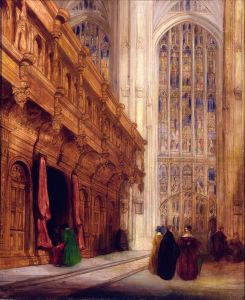
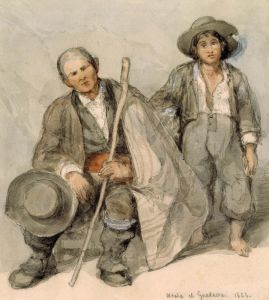
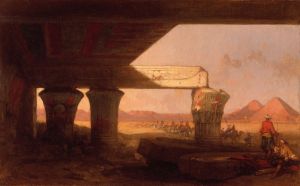
![Colossus in front of Temple of Wady Saboua [Wadi al-Sabua], Nubia.](/imgs/217471/s/david-roberts-colossus-in-front-of-temple-of-wady-saboua-wadi-alsabua-nubia-503a97c9.jpg)
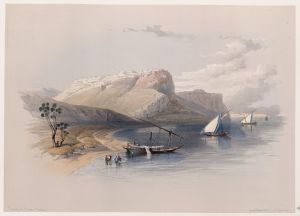
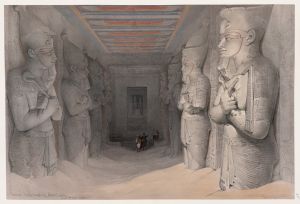
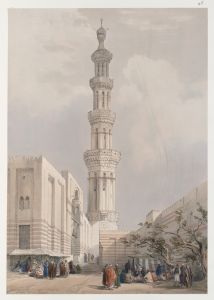
![One of two colossal statues of Rameses [sic] II. Entrance to the Temple at Luxor.](/imgs/217522/s/david-roberts-one-of-two-colossal-statues-of-rameses-sic-ii-entrance-to-the-temple-at-luxor-473c42e1.jpg)
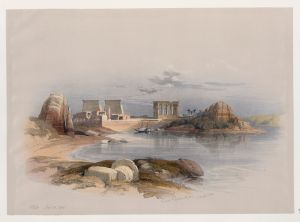
![Temple of Dandour [Dendûr], Nubia.](/imgs/217545/s/david-roberts-temple-of-dandour-dendur-nubia-8921547f.jpg)
![Temple of Kalabshee [Kalabsha, Kalâbishah], Nubia. Nov. 1838.](/imgs/217548/s/david-roberts-temple-of-kalabshee-kalabsha-kalabishah-nubia-nov-1838-be0ac440.jpg)
